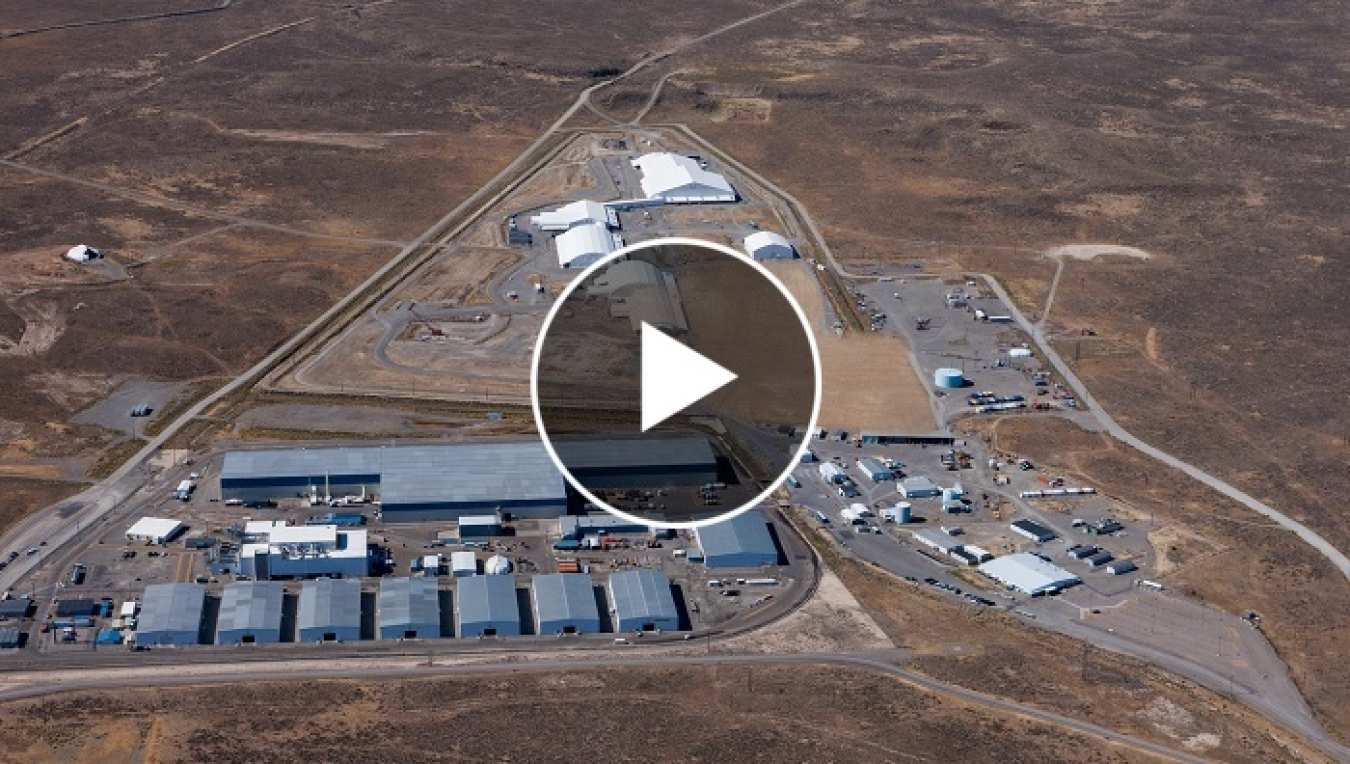EM and a contractor counterpart have outlined end-state plans for Idaho National Laboratory (INL) Site facilities that will result in a prominent transformation across the 890-square-mile site within this decade.
Office of Environmental Management
December 20, 2022
Watch this animated video on EM’s vision for the end state of the Radioactive Waste Management Complex at DOE’s Idaho National Laboratory Site.
IDAHO FALLS, Idaho – EM and a contractor counterpart have outlined end-state plans for Idaho National Laboratory (INL) Site facilities that will result in a prominent transformation across the 890-square-mile site within this decade.
Visible progress can already be seen at the Radioactive Waste Management Complex. Earlier this year, Idaho Environmental Coalition (IEC) crews completed targeted buried waste exhumation within a 5.69-acre footprint of the 97-acre landfill called the Subsurface Disposal Area (SDA). Crews recently demolished the Accelerated Retrieval Project (ARP) IV facility, one of seven steel-framed, fabric-sided buildings at the SDA landfill.
Demolition of the ARP structures is necessary before construction can commence on an estimated 130-acre earthen cover over the landfill. The project will require an estimated 250,000 dump-truck loads of soils and rocks to be installed as the final step in remediation of the area.
The next structure to be demolished will be ARP V, which sits atop Pit 9. It will be demolished in early 2023, followed by five other ARP enclosures over the next two years. Then, construction of the cap is scheduled to begin and continue until the end of 2028.
At the nearby Advanced Mixed Waste Treatment Project (AMWTP), deactivation and closure activities of the Transuranic Storage Area Retrieval Enclosure (TSA-RE) continue with removal of an asphalt pad. The asphalt is being disposed at the Idaho Comprehensive Environmental Response, Compensation, and Liability Act (CERCLA) Disposal Facility (ICDF).
A small portion of the TSA-RE houses waste awaiting shipment to the Waste Isolation Pilot Plant (WIPP) for disposal. The transuranic waste shipments to WIPP are expected to continue for the next several years, removing waste once stored at the AMWTP and SDA.
AMWTP has retrieved, characterized, treated, repackaged, certified and shipped roughly 62,000 cubic meters of waste to WIPP and other offsite repositories for disposal. Demolition of the AMWTP facilities will be planned after the waste shipments to WIPP are completed.
At the Naval Reactors Facility (NRF), DOE and the Naval Nuclear Propulsion Program have established an agreement for EM to perform select deactivation and decommissioning (D&D) activities on the NRF footprint.
IEC will remove buildings, support structures and four reactor vessels that once supported the Submarine 1st Generation Westinghouse (S1W), Aircraft Carrier 1st Generation Westinghouse (A1W) and Submarine 5th Generation General Electric (S5G) reactor prototypes. All contaminated equipment, and the vessels themselves, from the S1W and A1W prototypes are planned to be disposed onsite at the ICDF in accordance with the facility’s waste acceptance criteria. These D&D actions will free up to 4.6 acres at NRF for other purposes.
Recently, DOE, the U.S. Environmental Protection Agency (EPA) and the state of Idaho agreed to expand the ICDF to accommodate demolition debris from NRF and other sitewide cleanup activities. The new landfill cell will increase the overall waste disposal capacity of the facility to 1.38 million cubic yards and extend its mission by 25 years.
Lastly, EM is preparing the Integrated Waste Treatment Unit (IWTU) to begin radiological operations to treat 900,000 gallons of liquid sodium-bearing waste from three nearby underground waste storage tanks. Following completion of the waste treatment campaign, the emptied tanks will be cleaned and grouted. The tanks will then be closed and the area capped in accordance with federal requirements.
EM plans to build a new building to increase the storage capacity for the treated sodium-bearing waste.
“The cleanup program has had a successful 33-year run," Idaho Cleanup Project Manager Connie Flohr said. "The next decade will provide the most substantial, visible results in the history of the program to date.”
To receive the latest news and updates about the Office of Environmental Management, submit your e-mail address.

